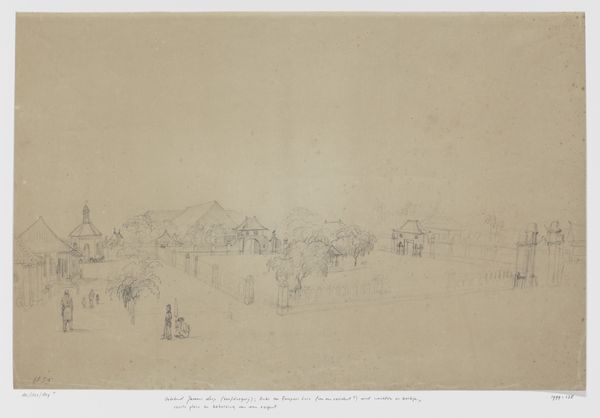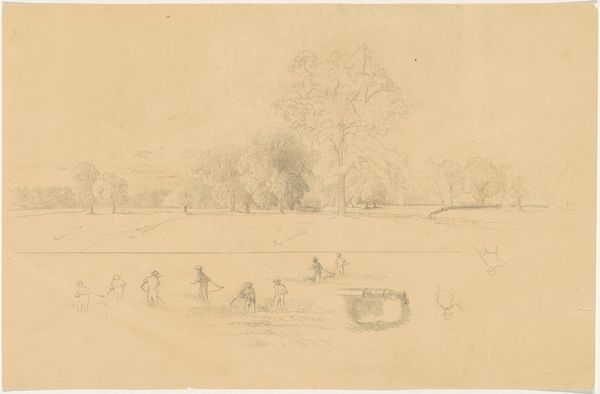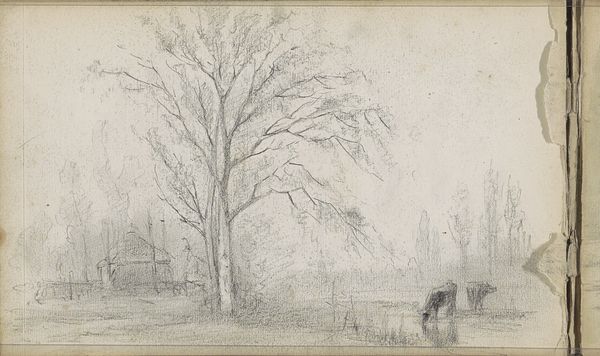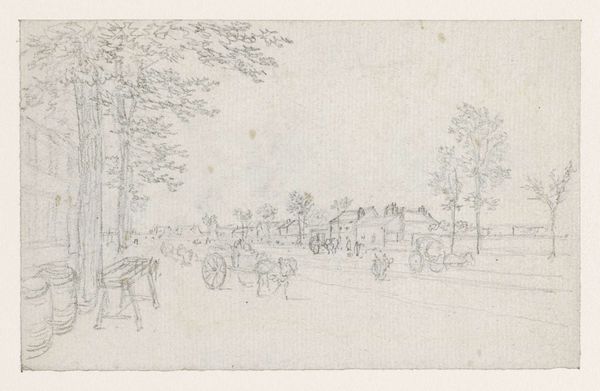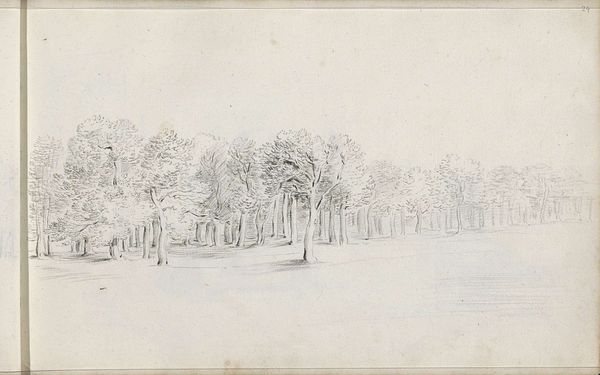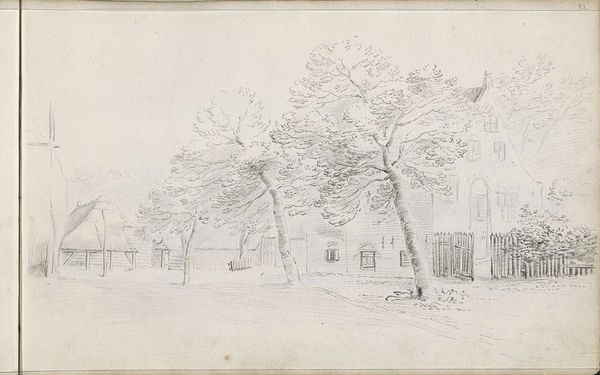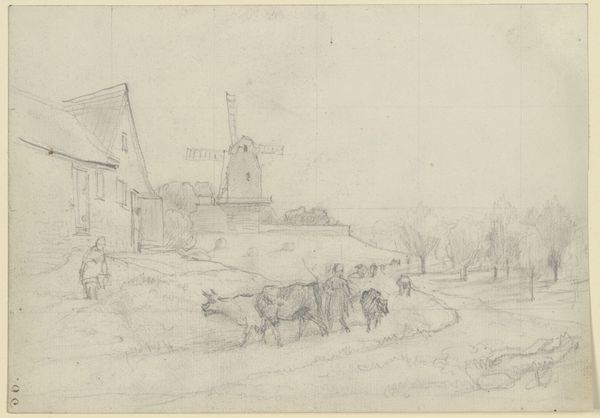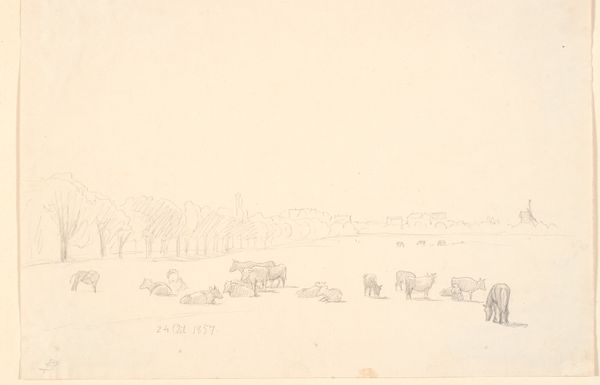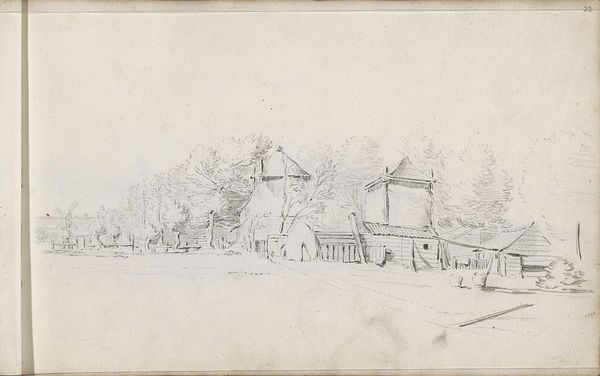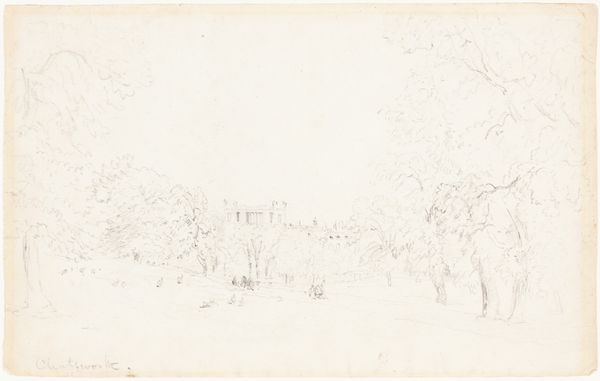
drawing, architecture
#
drawing
#
blue ink drawing
#
16_19th-century
#
landscape
#
etching
#
personal sketchbook
#
architecture
Copyright: Public Domain
Curator: Before us is "Ansicht einer Stadt mit Burg," currently held at the Städel Museum. Though we lack a precise date for this blue ink drawing, its style suggests it likely hails from the 18th or 19th century. Editor: Immediately, I’m struck by how ephemeral the whole scene appears. The figures, the buildings—everything seems on the verge of fading away like a memory. It evokes a melancholic sense, a longing for a time we can barely grasp. Curator: Indeed, the medium lends itself to that sensation. It’s just a drawing; preliminary perhaps, offering us an insight into the artistic process. We see the hatching and the tentative lines used to build form, the bare support—its inherent modesty contrasting with the grand subject of a town and castle. The relative economy of resources is notable, suggesting perhaps a sketch completed while travelling. Editor: But the details—even in their faintness—are significant. Note the horse-drawn carriage, a symbol of status and transit; the chickens pecking on the ground, reminders of everyday life; and in the background, the suggestion of a fortified structure, possibly symbolizing power and authority. Even a dog, happily frolicking nearby. All these create a tableau, frozen in a moment ripe with meaning. I wonder if the light palette is also a reminder of the limitations of perception. The reality is partially revealed to the eye but the meaning making is continuous. Curator: And how would the choice of blue ink influence this reception? Its inherent association with melancholy, the boundless depth of the sky, the natural association with landscapes. But beyond the artistic intention, how did blue pigment even enter the artist's repertoire? Blue pigments and dyes, were prized materials with trade often determining its local prominence. Ultramarine, derived from lapis lazuli, was once worth more than gold. How did its social history change artmaking and consumption? Editor: Interesting point. Consider, though, how that scarcity elevated the symbolic significance. Its use here suggests this isn’t merely a casual sketch, but an investment in expressing the emotional and symbolic weight of the scene. Perhaps also linking the landscape depicted with values, like freedom, linked historically with blue dye. Curator: Precisely. The artist's intentional decisions speak volumes about their own historical context, artistic choices, and the symbolic narratives they are crafting through readily available yet once-pricey materials. Editor: A work on many registers. Each delicate stroke reveals a complex interplay of emotion, history, and cultural symbols. Curator: An etching such as this is just a humble landscape until all of these meanings coalesce.
Comments
No comments
Be the first to comment and join the conversation on the ultimate creative platform.

